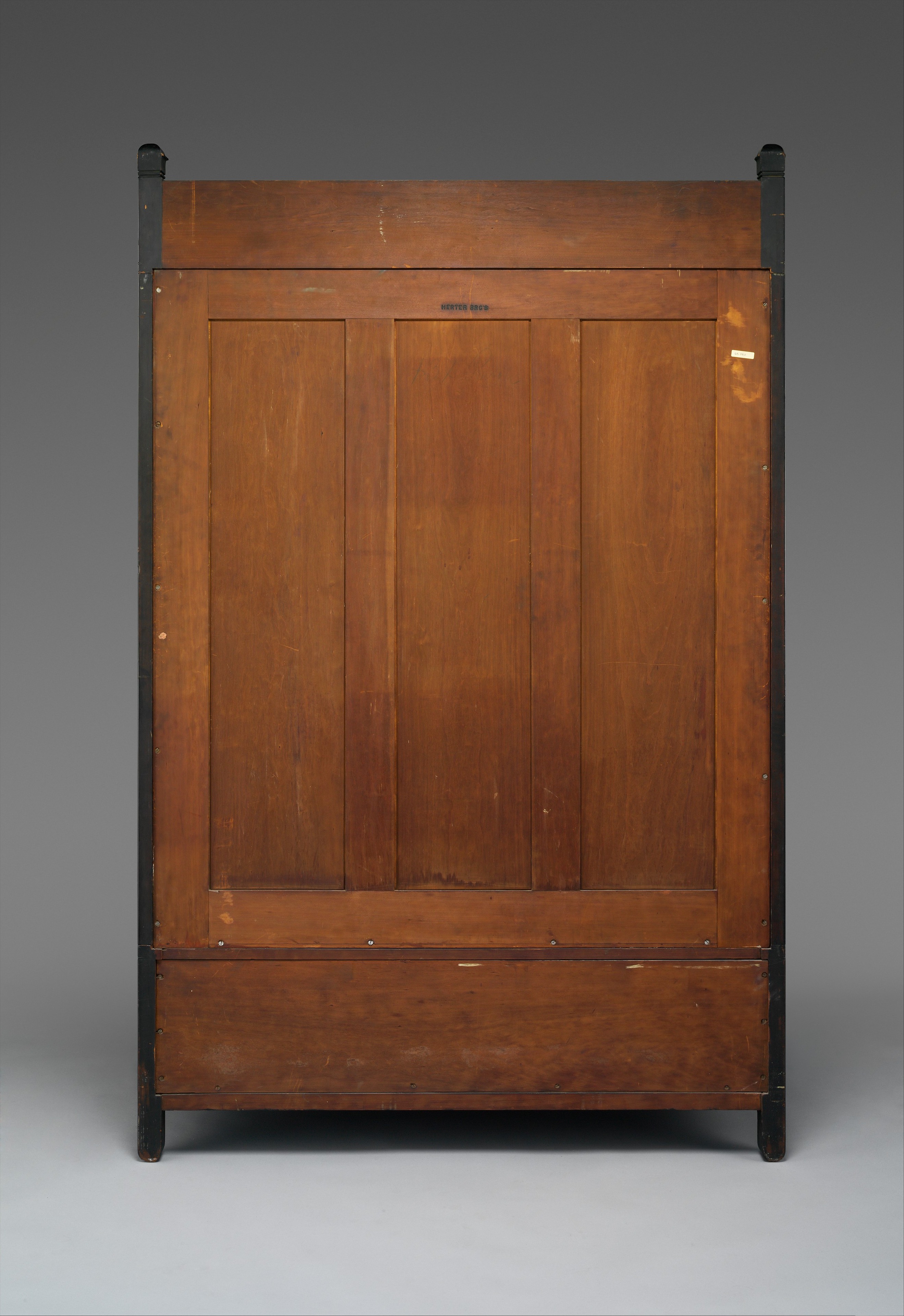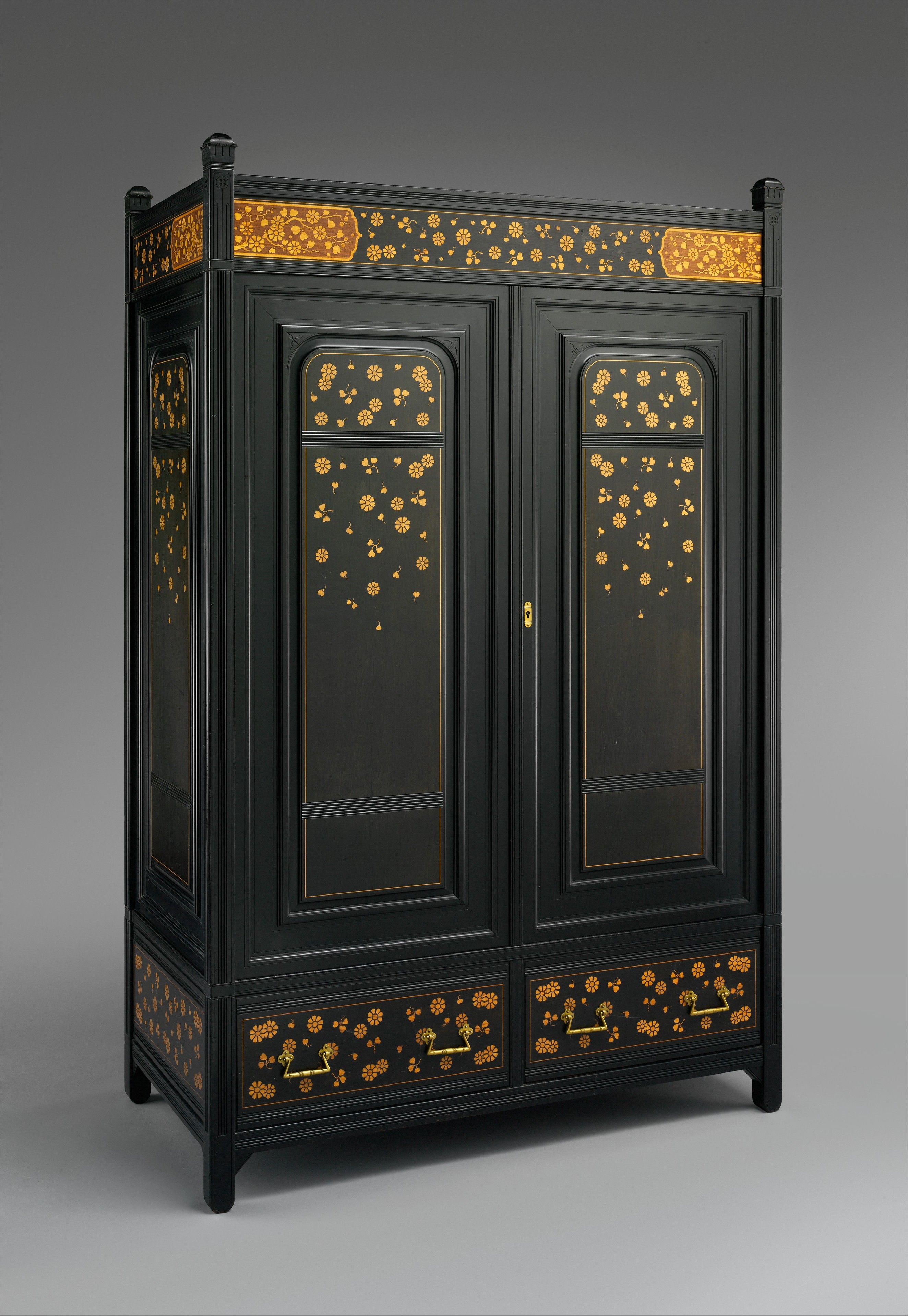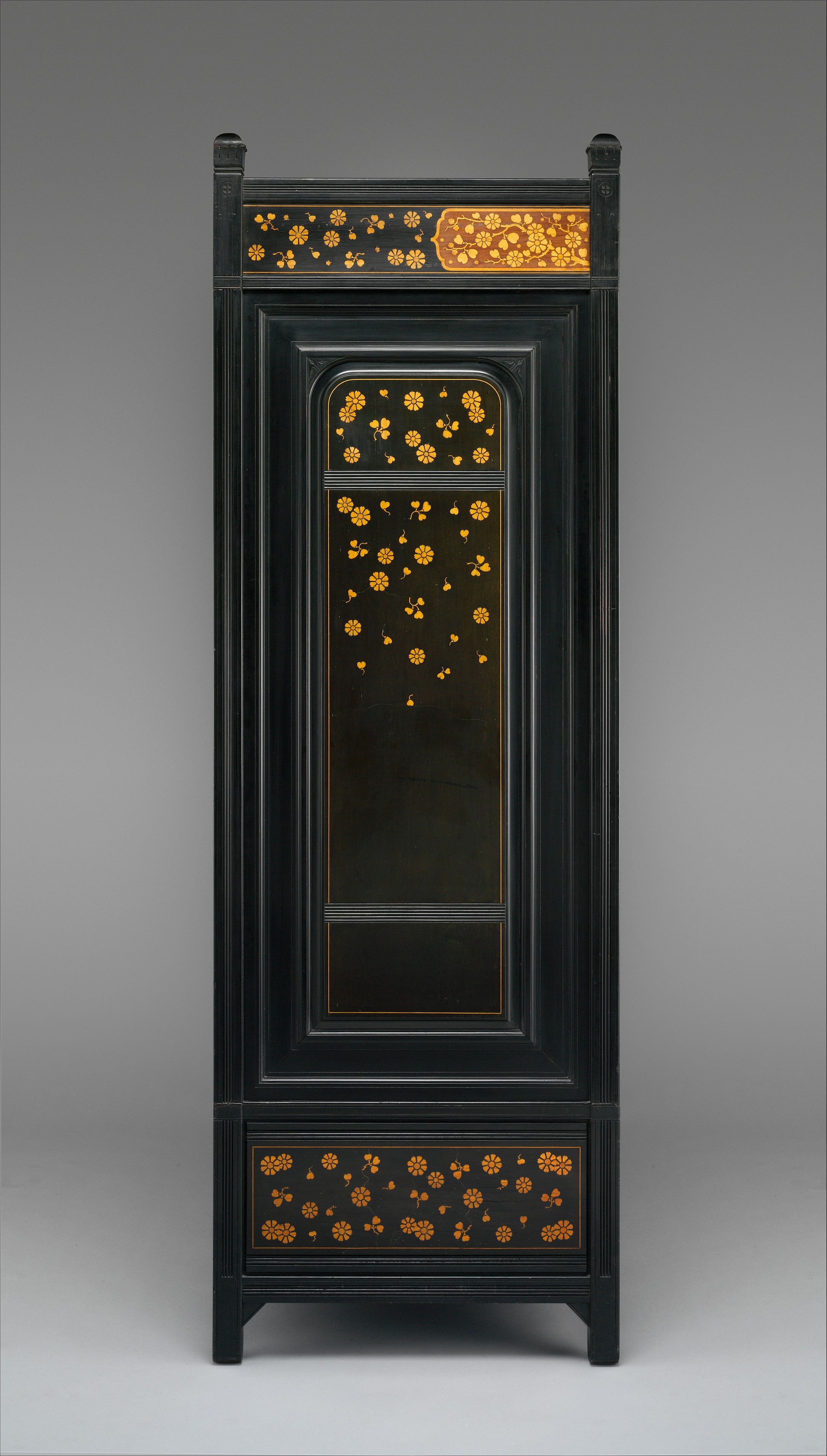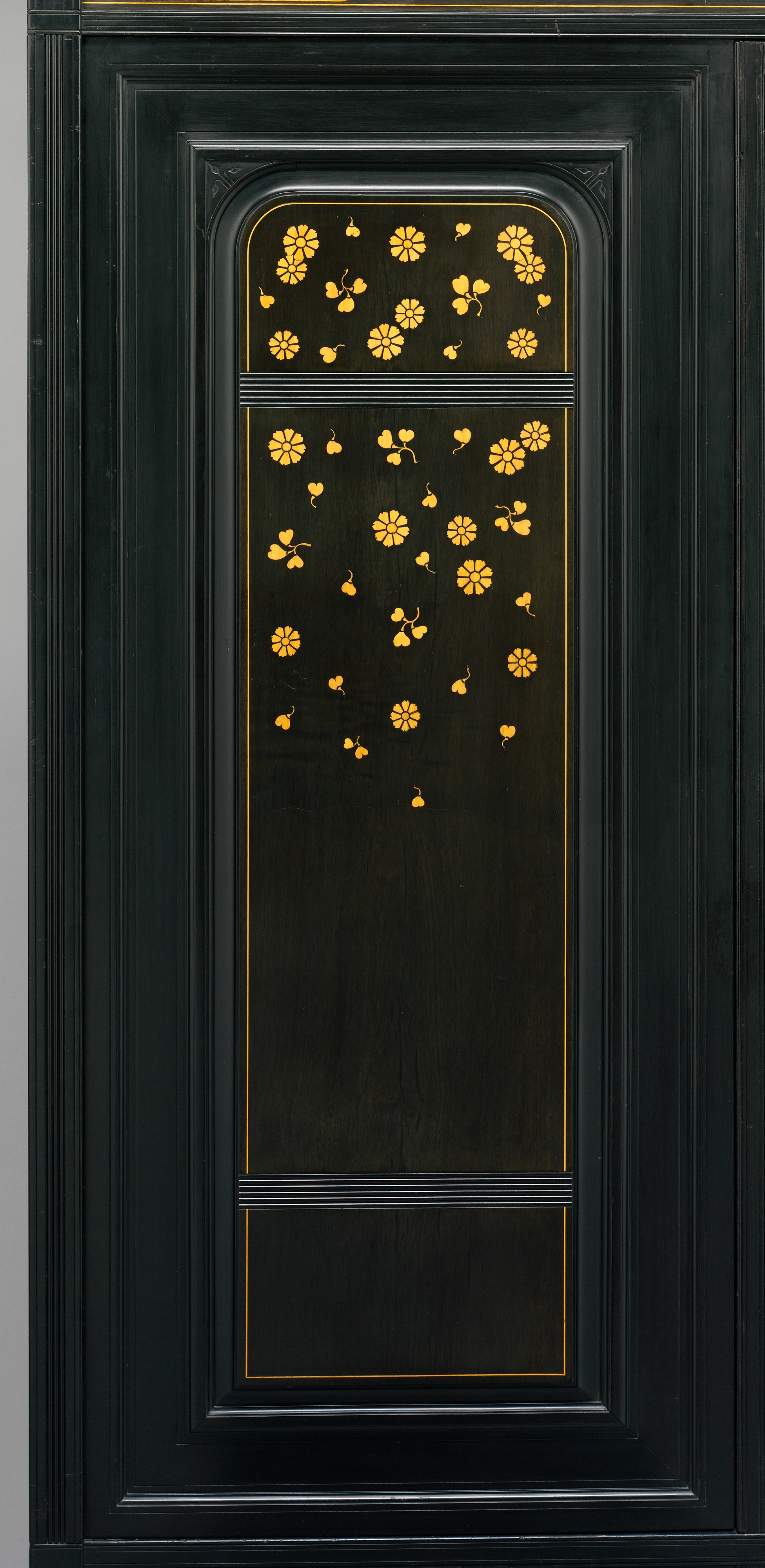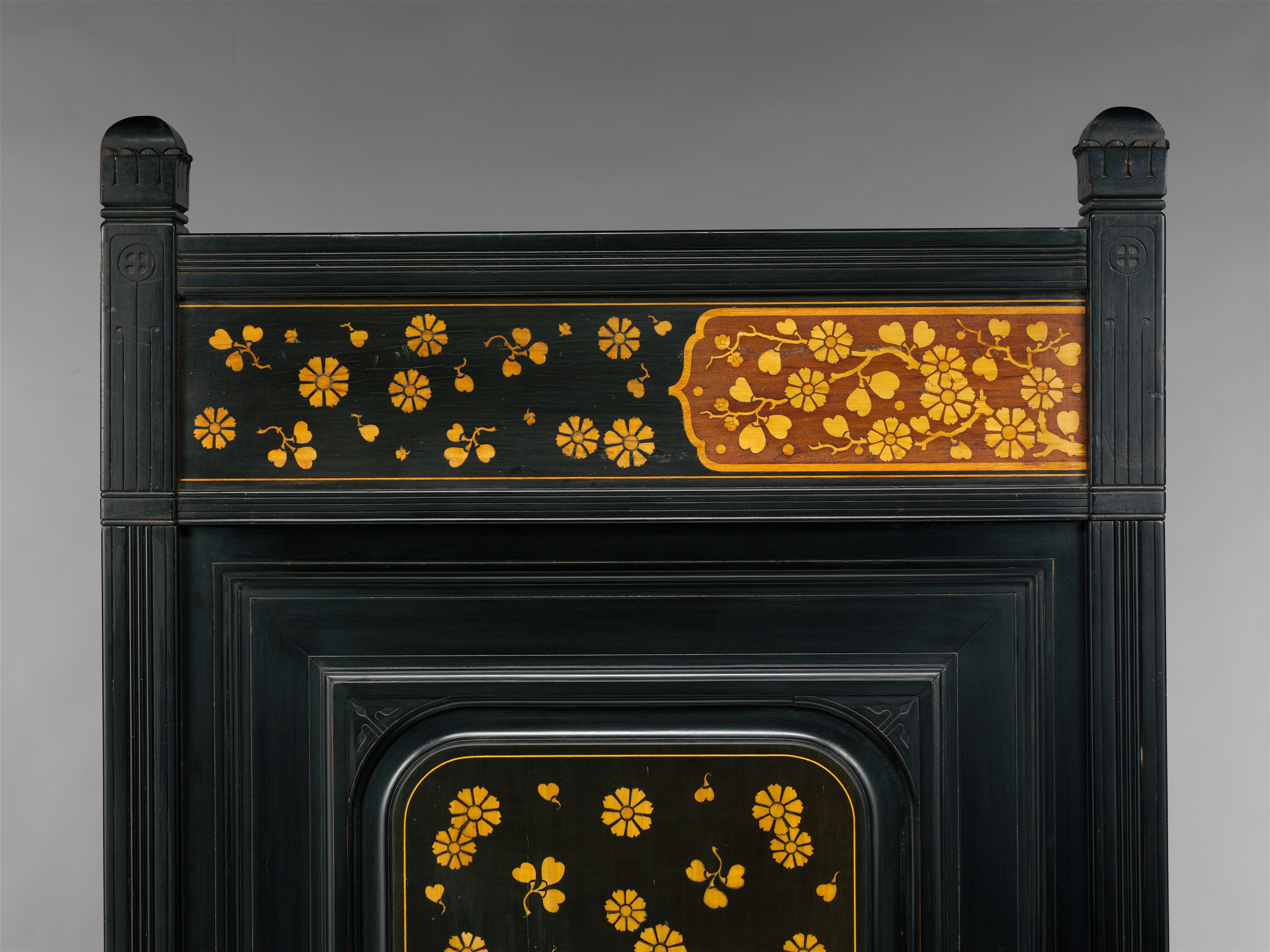Wardrobe
Herter Brothers American
Herter Brothers, the firm of Gustave and Christian Herter, produced furniture and integrated interior designs in a great variety of styles. This wardrobe epitomizes their Anglo-Japanesque style of the 1870s, incorporating many of the design principles that the British critic Charles Locke Eastlake (1793–1865) promoted in the most widely read primer of the Aesthetic movement, his "Hints on Household Taste" (1868), published in America in 1872. The wardrobe is spare, rectilinear, and, as Eastlake espoused, has no "extravagant contour or unnecessary curves." Despite its apparent simplicity, however, the wardrobe is a highly sophisticated object. It references Ming-dynasty cupboards of the seventeenth century that are nearly identical in form, and the marquetry decoration is one of the most remarkable examples in the Herter oeuvre.
Due to rights restrictions, this image cannot be enlarged, viewed at full screen, or downloaded.
This artwork is meant to be viewed from right to left. Scroll left to view more.



